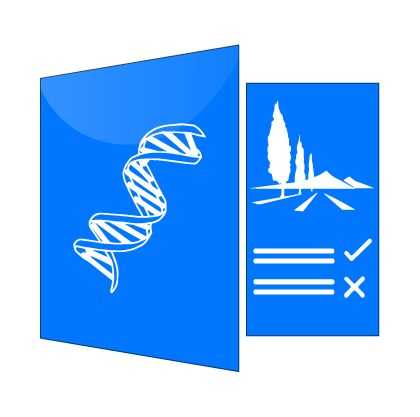Land evaluation decision support system (MicroLEIS-DSS) for agricultural soil protection

The Mediterranean Land Evaluation Information System (Micro-LEIS) is an agro-ecological decision support system that contains a set of useful tools for decision-making in a wide range of agro-ecological schemes. The design philosophy follows a toolkit approach, integrating many software tools: databases, statistics, expert systems, neural networks, Web and GIS applications, and other information technologies.
Data are organized into three inter-connected relational databases with detailed descriptions of soil profile, meteorological stations, and farming systems in 64 representative sites in the Andalusian region of Spain. The soil database is the multilingual soil database SDBm Plus. The climate database (CDBm) contains mean monthly values of maximum and minimum temperature, precipitation, maximum precipitation per day, and days of precipitation. It also includes (i) subroutines for calculating climate variables for use in land evaluation (various types of potential evapotranspiration, humidity index, aridity index, growing season length, precipitation concentration index, erosivity index, and leaching degree). The farming database (MDBm) stores crop and management information obtained through interviews with farmers and is geo-referenced.
In the MicroLEIS DSS system, land evaluation analysis focuses on agricultural land use, planning, and management for soil protection purposes. The system contains several qualitative and quantitative models, related to land productivity or land vulnerability, in which a wide range of input land characteristics can be considered. In order to facilitate the matching of the land characteristics with land use requirements or limitations, land qualities are used. In the land suitability models the land qualities used are plant water use efficiency, water- and air-filled pore space, nutrient availability, plant root penetration, water infiltration, and crop growth. The land qualities used in the land vulnerability models are runoff and leaching potential, erosion resistance, soil structure, cover protection, pesticide absorption and mobility, subsoil compaction, and soil workability.
The MicroLEIS models are brought to users through application software in two non-spatial versions (PC-based and Internet-based) and a spatial GIS-based version.
The MicroLEIS land productivity models allow identification of areas with specific bioclimatic deficiencies, soil and terrain limitations for agricultural use, selection of forest species in marginal lands, estimates of areas with natural fertility problems, and selection and crop yield quantification of the main traditional crops. The land vulnerability models allow identification of areas with soil erosion and contamination problems, impact of soil loss on crop productivity, selection of management practices to minimize soil erosion, recommendations for site-adjusted farming techniques depending on soil compaction sensitivity, and crop management date according to the soil workability conditions.
